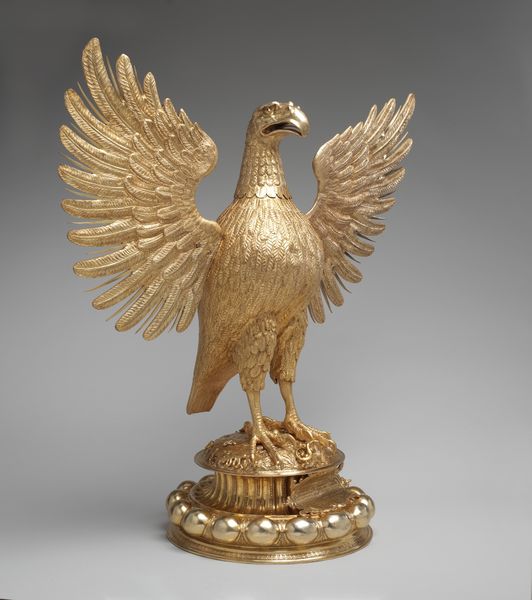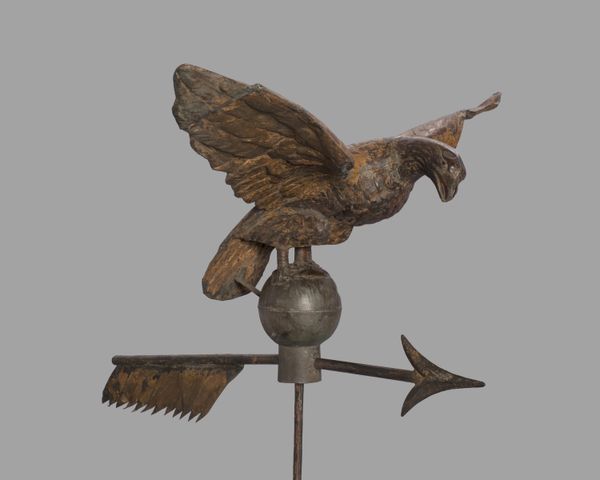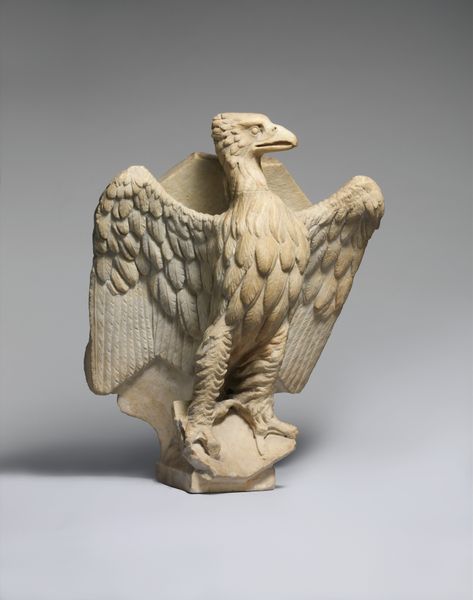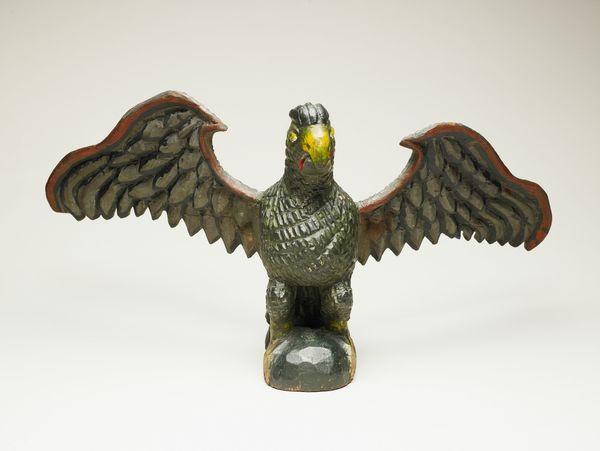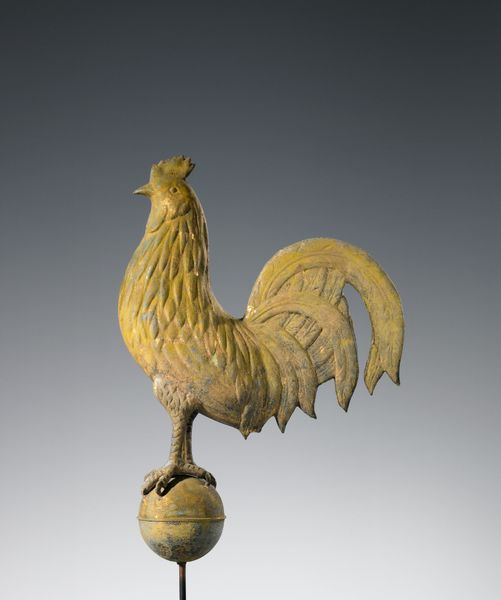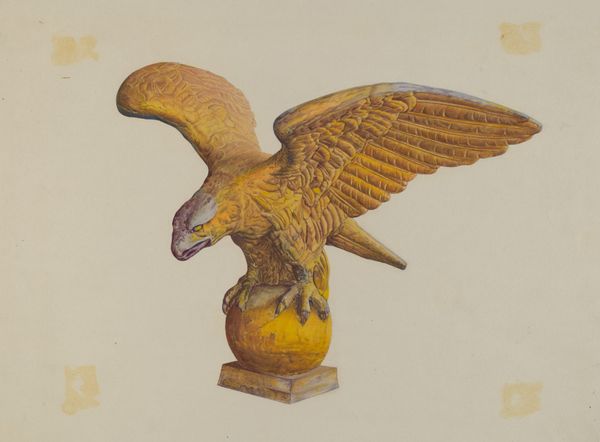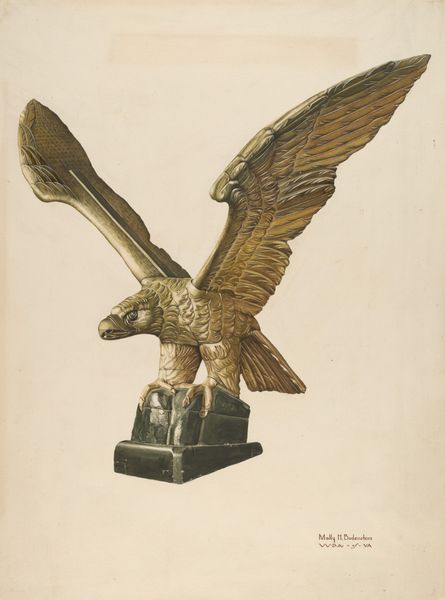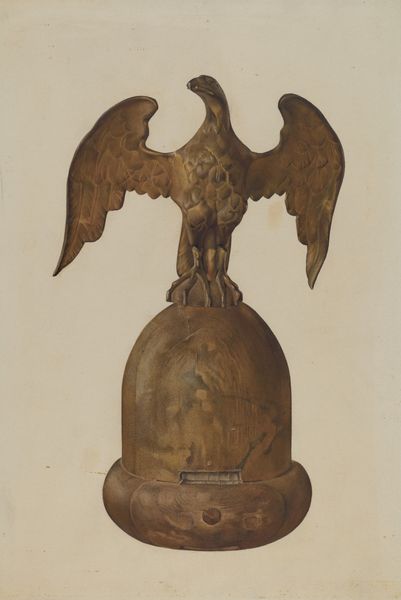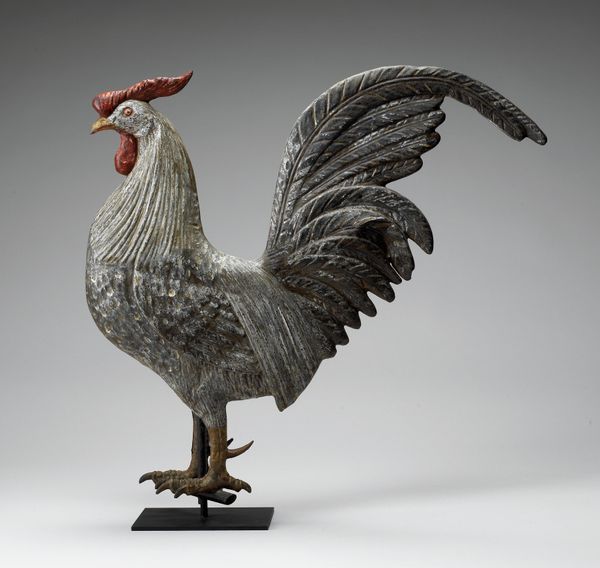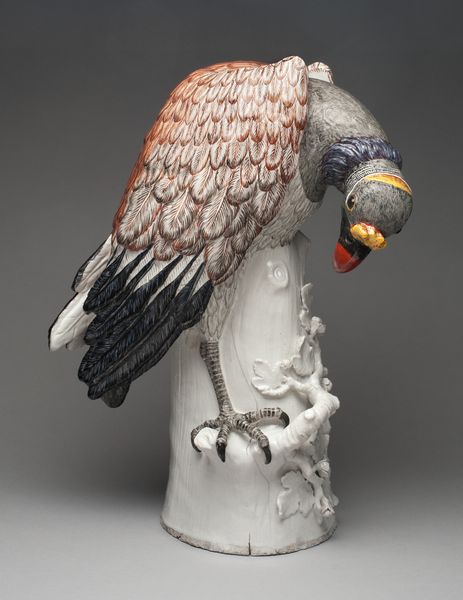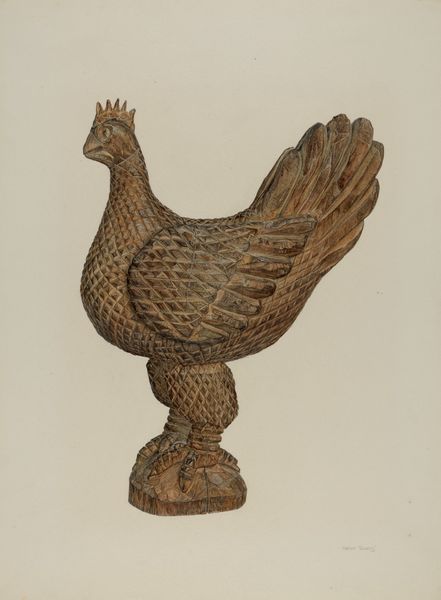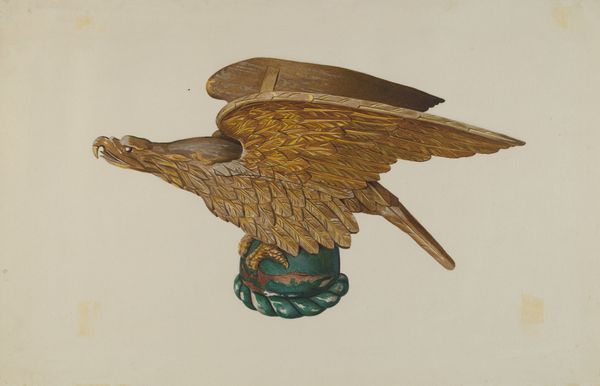
sculpture, wood
#
portrait
#
neoclacissism
#
allegory
#
sculpture
#
sculpture
#
wood
Dimensions: 36 x 68 x 61 in. (91.4 x 172.7 x 154.9 cm)
Copyright: Public Domain
Curator: Look at the fierce and commanding presence of this gilded "Eagle" sculpture by William Rush, crafted between 1809 and 1811. It’s a powerful piece of early American Neoclassicism. Editor: My first impression is pure drama. The outstretched wings, the globe beneath, it’s almost theatrical. There's a feeling of immense authority. Curator: Exactly. Consider the historical context: this sculpture embodies the young nation’s aspirations for strength, liberty, and global influence. Rush consciously adopted the symbol of the eagle, recalling the Roman Empire but translating it into an American idiom. Editor: And eagles are such potent symbols. They soar above, possessing almost shamanistic powers of vision. This particular eagle's grip on the sphere suggests dominion. The artist successfully tapped into a pre-existing, culturally embedded idea of power, projecting it onto a nation still finding its footing. Curator: Rush was very deliberate in his artistic choices, reflecting a society steeped in revolution and rife with debates about citizenship. This carving could be read as an assertion of American exceptionalism, or alternatively, and in our own moment, a cautionary commentary on imperial ambitions. Its meaning continues to evolve. Editor: It also suggests a connection between heaven and earth. Its position aloft also recalls older beliefs about eagles carrying the souls of the dead. In so many ways it resonates across cultures. You know the gilding is intriguing, lending an air of extravagance but perhaps also suggesting the pitfalls of materialistic excess. Curator: The artist utilizes the classical allegorical framework while subtly critiquing its excesses through the use of that very material. The wood reminds us of our own earthly limitations and that the empire is a very young idea, and still being molded like this carving. The interplay creates a visual push-pull which offers us a clear commentary. Editor: This symbol carries so much baggage, hasn’t it? It reminds us that power, like the symbols themselves, must always be interrogated, its narrative examined. Thank you, I learned a lot! Curator: I agree completely. Rush gives us something rich and multi-faceted to consider. Its enduring symbolic language continues to ask probing questions of nation and self.
Comments
No comments
Be the first to comment and join the conversation on the ultimate creative platform.
